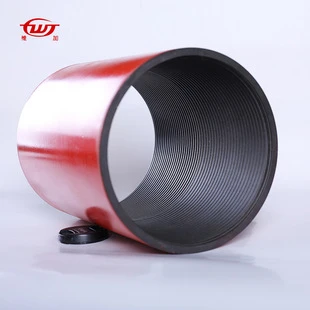- Afrikaans
- Albanian
- Amharic
- Arabic
- Armenian
- Azerbaijani
- Basque
- Belarusian
- Bengali
- Bosnian
- Bulgarian
- Catalan
- Cebuano
- Corsican
- Croatian
- Czech
- Danish
- Dutch
- English
- Esperanto
- Estonian
- Finnish
- French
- Frisian
- Galician
- Georgian
- German
- Greek
- Gujarati
- Haitian Creole
- hausa
- hawaiian
- Hebrew
- Hindi
- Miao
- Hungarian
- Icelandic
- igbo
- Indonesian
- irish
- Italian
- Japanese
- Javanese
- Kannada
- kazakh
- Khmer
- Rwandese
- Korean
- Kurdish
- Kyrgyz
- Lao
- Latin
- Latvian
- Lithuanian
- Luxembourgish
- Macedonian
- Malgashi
- Malay
- Malayalam
- Maltese
- Maori
- Marathi
- Mongolian
- Myanmar
- Nepali
- Norwegian
- Norwegian
- Occitan
- Pashto
- Persian
- Polish
- Portuguese
- Punjabi
- Romanian
- Russian
- Samoan
- Scottish Gaelic
- Serbian
- Sesotho
- Shona
- Sindhi
- Sinhala
- Slovak
- Slovenian
- Somali
- Spanish
- Sundanese
- Swahili
- Swedish
- Tagalog
- Tajik
- Tamil
- Tatar
- Telugu
- Thai
- Turkish
- Turkmen
- Ukrainian
- Urdu
- Uighur
- Uzbek
- Vietnamese
- Welsh
- Bantu
- Yiddish
- Yoruba
- Zulu
Innovative Designs for Casing Collar Applications in Modern Drilling Techniques
Understanding Casing Collars An Essential Component in Well Construction
In the world of oil and gas drilling, casing collars play a crucial role in ensuring the integrity and functionality of well construction. These specially designed components are integral to the casing string, which provides structural support to the wellbore and isolates different geological formations to prevent issues such as fluid migration and contamination. In this article, we will explore the significance, types, functions, and best practices associated with casing collars in the drilling industry.
What are Casing Collars?
Casing collars are fittings attached to the casing pipes that serve multiple purposes during the drilling and completion of a well. These collars are typically made from steel and are manufactured to withstand the high pressures and temperatures encountered in subsurface environments. By connecting multiple sections of casing, casing collars ensure a secure and stable construction that can support the loads imposed by the surrounding rock and drilling activities.
Types of Casing Collars
Casing collars come in various designs, each tailored for specific applications and structural requirements. Some of the most common types include
1. Regular Collars These are standard casing collars that connect two sections of casing. They provide a mechanical joint that ensures the integrity of the casing string.
2. Heavy Wall Collars Designed for high-pressure applications, heavy wall collars have an increased wall thickness to enhance strength and durability in challenging environments.
3. Stage Collars Often used in multi-stage fracturing operations, stage collars allow for the selective isolation of sections of the wellbore, enabling operators to perform targeted operations in specific intervals.
4. Specialty Collars These collars may include features such as packers, check valves, or other mechanisms that facilitate unique operational requirements.
Functions of Casing Collars
Casing collars serve several essential functions in the drilling process
casing collar

1. Support and Stability By connecting individual casing pipes, collars ensure the overall structural integrity of the casing string, preventing buckling or collapse under pressure.
2. Isolation Collars help isolate different formations within the wellbore, which is critical for preventing fluid migration and contamination between zones, as well as protecting freshwater supplies.
3. Facilitating Operations Some collars are designed to allow for specific downhole operations, such as perforating or stimulating, by providing access to targeted zones through their specialized features.
4. Pressure Management Casing collars help manage the various pressures that develop within the well, ensuring that the casing string can withstand intense downhole conditions.
Best Practices in Using Casing Collars
To maximize the effectiveness of casing collars, operators should adhere to best practices throughout the drilling and completion phases
1. Material Selection Choose the appropriate grade of steel for collars based on the expected pressures, temperatures, and corrosive conditions of the well environment.
2. Proper Installation Ensure that casing collars are installed according to manufacturer specifications and industry standards. Adequate torque and tension should be applied to secure the connections without risking damage.
3. Regular Inspection Conduct thorough inspections of casing collars and the overall casing string during operations. Look for signs of wear, corrosion, or any structural defects that could compromise the well's integrity.
4. Documentation Maintain detailed records of collar specifications, installation procedures, and inspection results. This information is vital for future reference and for ensuring compliance with safety and regulatory standards.
Conclusion
Casing collars are more than just connectors; they are vital components that contribute to the success and safety of drilling operations. Their ability to provide support, isolation, and facilitate various wellbore activities makes them indispensable in the oil and gas industry. As technology advances and drilling techniques evolve, the design and application of casing collars will continue to adapt, ensuring that they meet the demanding challenges of modern well construction. Understanding the importance of these components can lead to more efficient and safer drilling practices, ultimately benefiting both operators and the environment.
-
Tubing Pup Joints: Essential Components for Oil and Gas OperationsNewsJul.10,2025
-
Pup Joints: Essential Components for Reliable Drilling OperationsNewsJul.10,2025
-
Pipe Couplings: Connecting Your World EfficientlyNewsJul.10,2025
-
Mastering Oilfield Operations with Quality Tubing and CasingNewsJul.10,2025
-
High-Quality Casing Couplings for Every NeedNewsJul.10,2025
-
Boost Your Drilling Efficiency with Premium Crossover Tools & Seating NipplesNewsJul.10,2025







